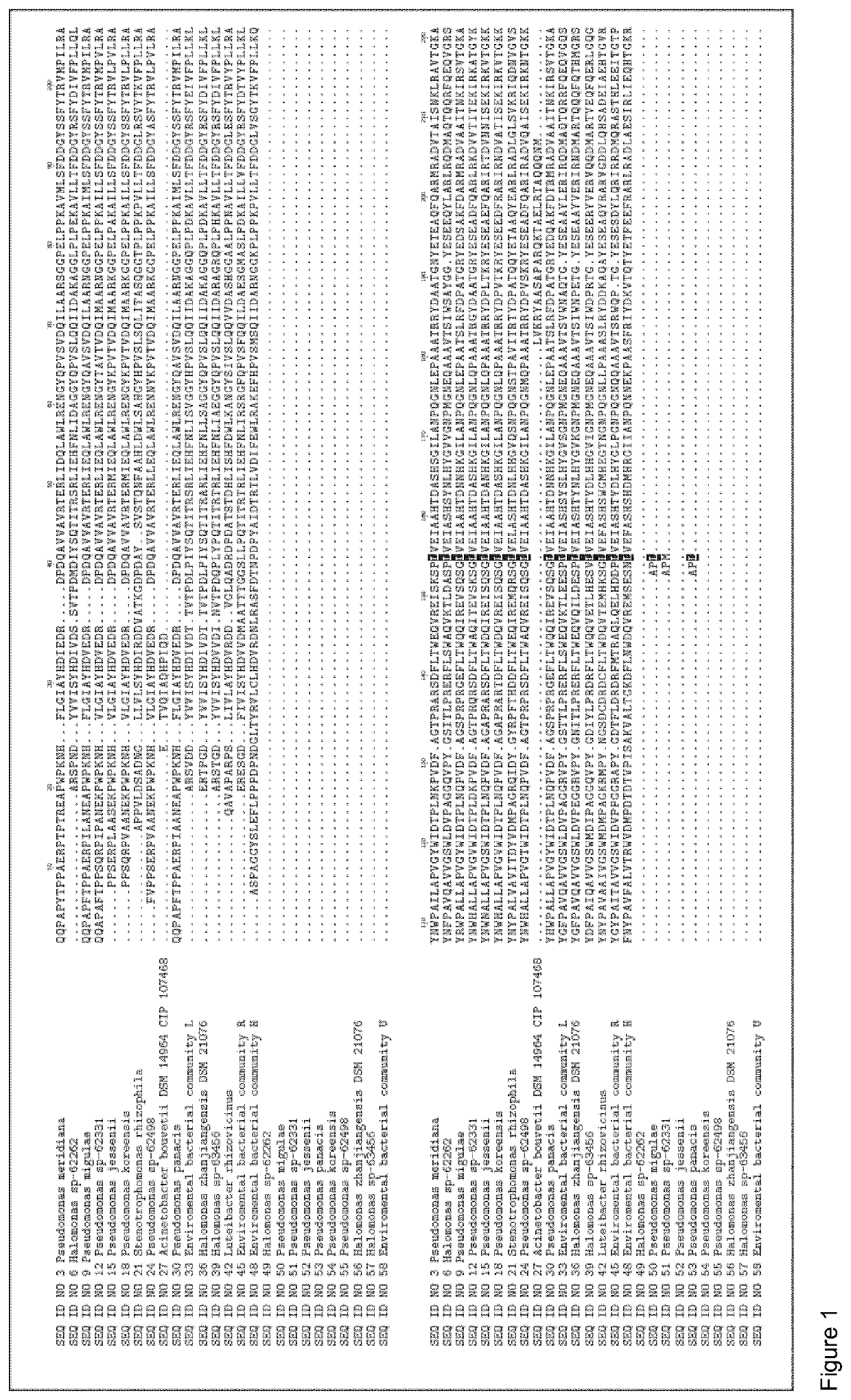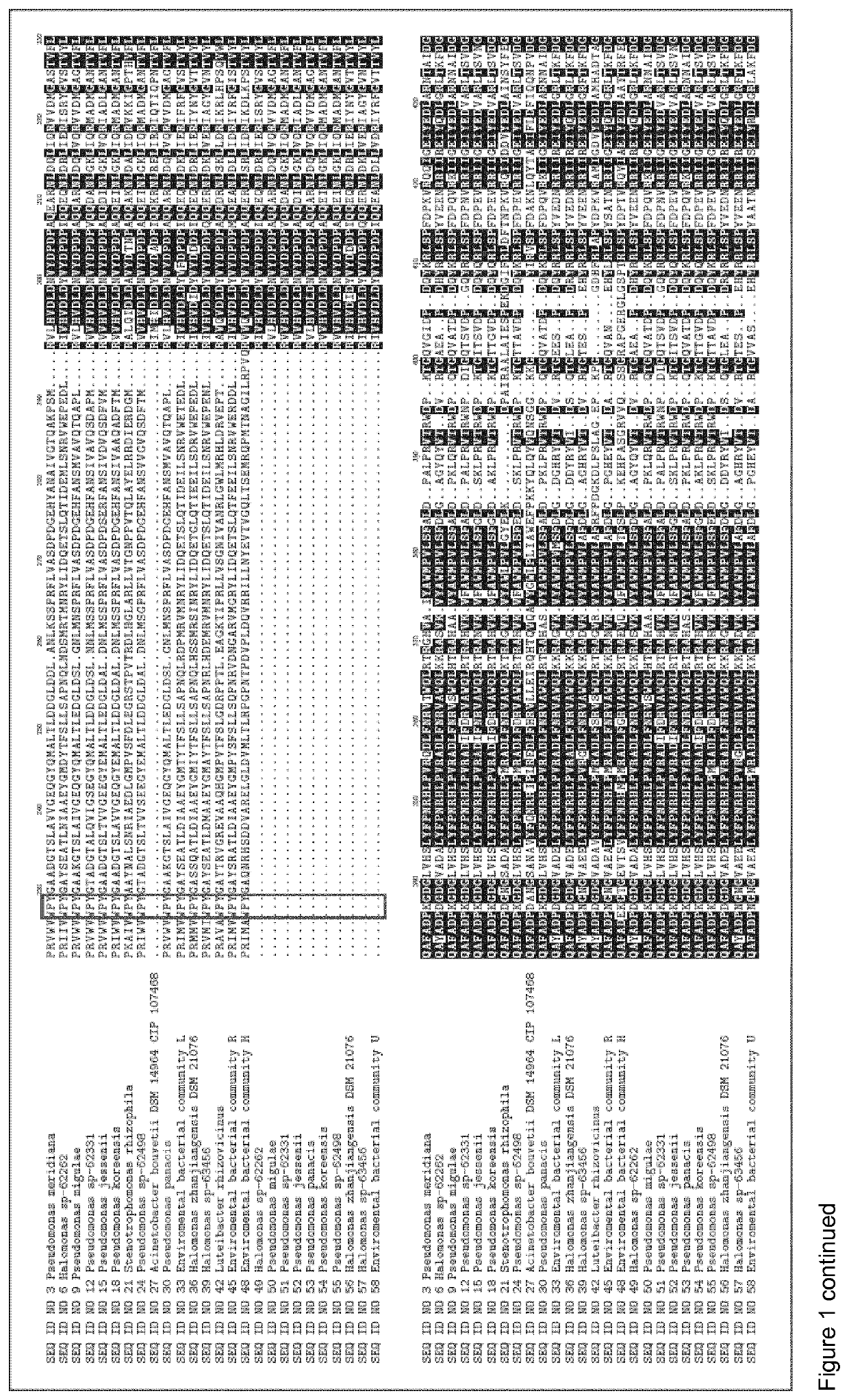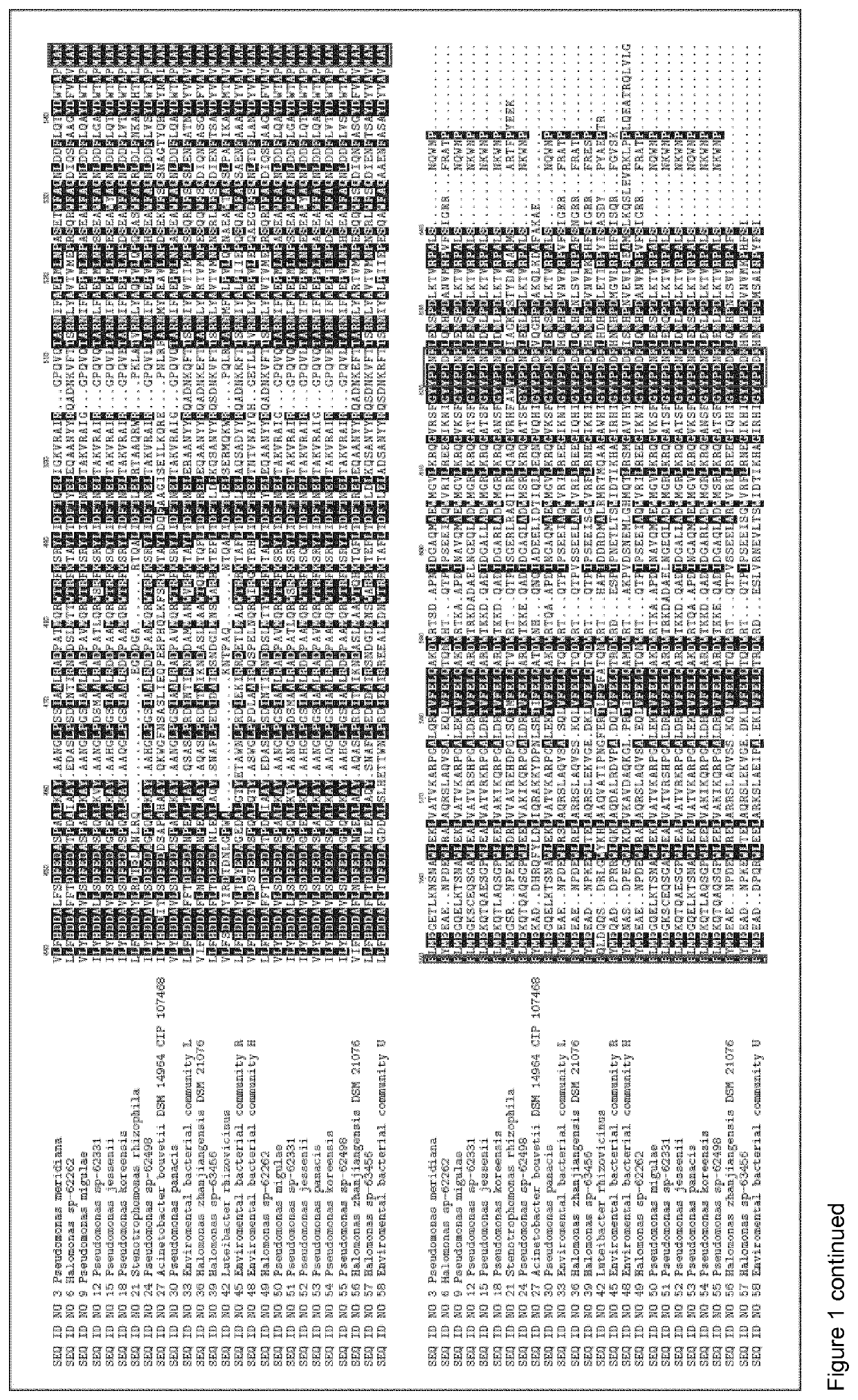Polypeptide compositions and uses thereof
- Summary
- Abstract
- Description
- Claims
- Application Information
AI Technical Summary
Benefits of technology
Problems solved by technology
Method used
Image
Examples
example 1
Cloning and Expression of PgaB Homologue (GHL13 Glycosyl Hydrolases) Polypeptides
Strains
[1118]The DNA encoding the genes of the polypeptides shown in SEQ ID NO 3, SEQ ID NO 6, SEQ ID NO 9, SEQ ID NO 12, SEQ ID NO 15, SEQ ID NO 18, SEQ ID NO 21, SEQ ID NO 24, SEQ ID NO 30, SEQ ID NO 33, SEQ ID NO 39, SEQ ID NO 42, SEQ ID NO 45, SEQ ID NO 48, SEQ ID NO 65, SEQ ID NO 68, SEQ ID NO 71, SEQ ID NO 74, SEQ ID NO 77. SEQ ID NO 80, SEQ ID NO 83, SEQ ID NO 86 or SEQ ID NO 89 were isolated from bacterial strains and environmental bacterial communities isolated from soil samples collected in different countries (see table 1).
[1119]Chromosomal DNA from the different strains and bacterial communities was subjected to full genome sequencing using Illumina technology. The genome sequence was analyzed for protein sequences that had glycosyl hydrolase GHL13 domain. 14 genes and corresponding sequence were identified in the genomes. Chromosomal DNA from Halomonas zhanjiangensis DSM 21076 was purchased...
example 2
His Tag Purification Method
[1121]The His-tagged GHL13 enzymes were purified by immobilized metal chromatography (IMAC) using Ni2+ as the metal ion on 5 mL HisTrap Excel columns (GE Healthcare Life Sciences). The purification took place at pH 7 and the bound protein was eluted with imidazole. The purity of the purified enzymes was checked by SDS-PAGE and the concentration of the enzyme determined by Absorbance 280 nm after a buffer exchange in 50 mM HEPES, 100 mM NaCI pH7.0
example 3
MiniLom Deep-Cleaning Effects of the PgaB Homologues (GHL13 Glycosyl Hydrolases) in Liquid Model Detergent
[1122]Staphylococcus aureus 15981 (kind gift from Inigo Lasa (Valle, J., A. Toledo-Arana, C. Berasain, J. M. Ghigo, B. Amorena, J. R. Penades, and I. Lasa. 2003, Mol. Microbiol. 48:1075-1087) was used as model microorganism in the present example. S. aureus was restreaked on Tryptone Soya Agar (TSA) (pH 7.3) (CM0131; Oxoid Ltd, Basingstoke, UK) and incubated for 3 day at 37° C. A single colony was inoculated into 10 mL of TSB+1% glucose (24563; Roquette Freres) and the culture was incubated for 16 hours at 37° C. with shaking (200 rpm). After propagation, the S. aureus culture was diluted (1:100) in fresh TSB+1% glucose and 2 mL aliquots were added to the wells of 12-well polystyrene flat-bottom microplates (3512; Costar, Corning Incorporated, Corning, N.Y., USA), in which round swatches (diameter 2 cm) of sterile polyester (WFK30A, 100% white polyester pre-washed) had been plac...
PUM
| Property | Measurement | Unit |
|---|---|---|
| Fraction | aaaaa | aaaaa |
| Fraction | aaaaa | aaaaa |
| Fraction | aaaaa | aaaaa |
Abstract
Description
Claims
Application Information
 Login to View More
Login to View More - R&D
- Intellectual Property
- Life Sciences
- Materials
- Tech Scout
- Unparalleled Data Quality
- Higher Quality Content
- 60% Fewer Hallucinations
Browse by: Latest US Patents, China's latest patents, Technical Efficacy Thesaurus, Application Domain, Technology Topic, Popular Technical Reports.
© 2025 PatSnap. All rights reserved.Legal|Privacy policy|Modern Slavery Act Transparency Statement|Sitemap|About US| Contact US: help@patsnap.com



